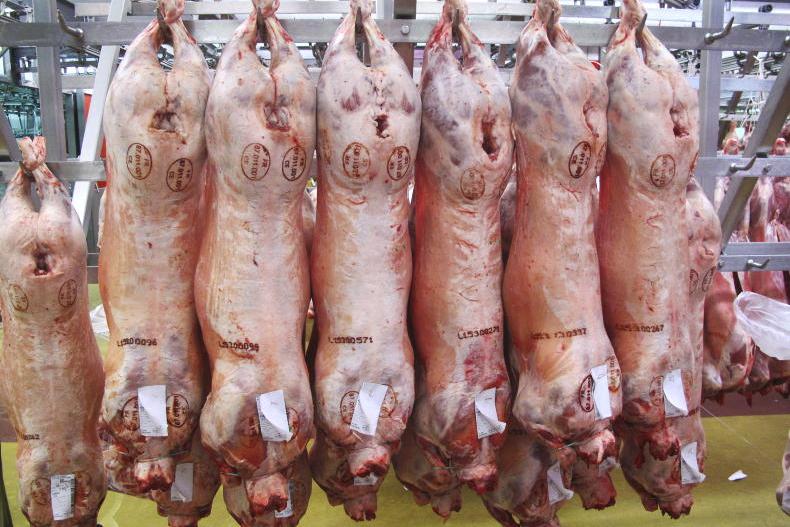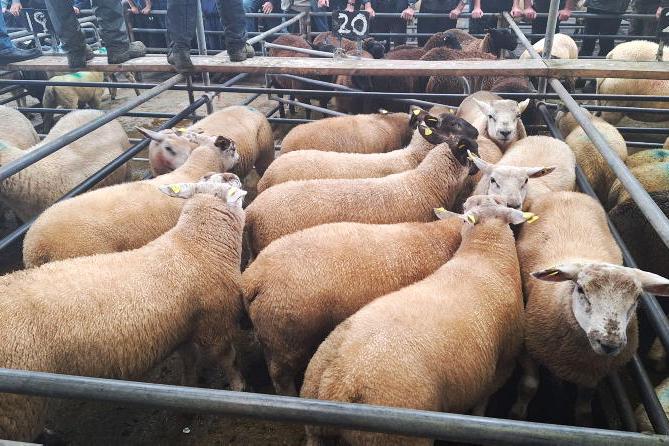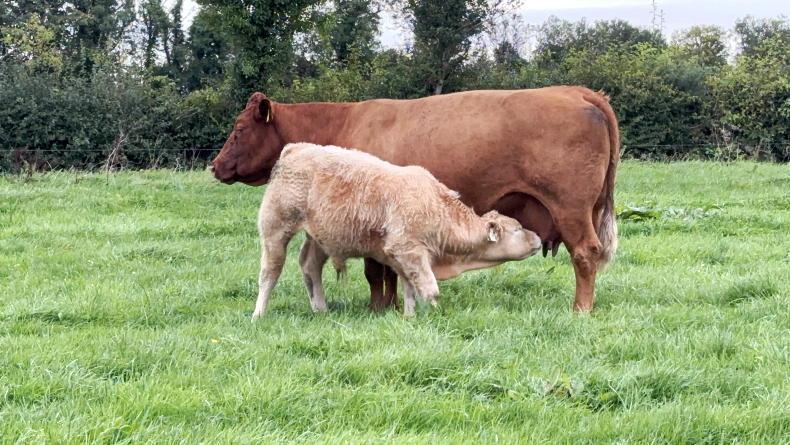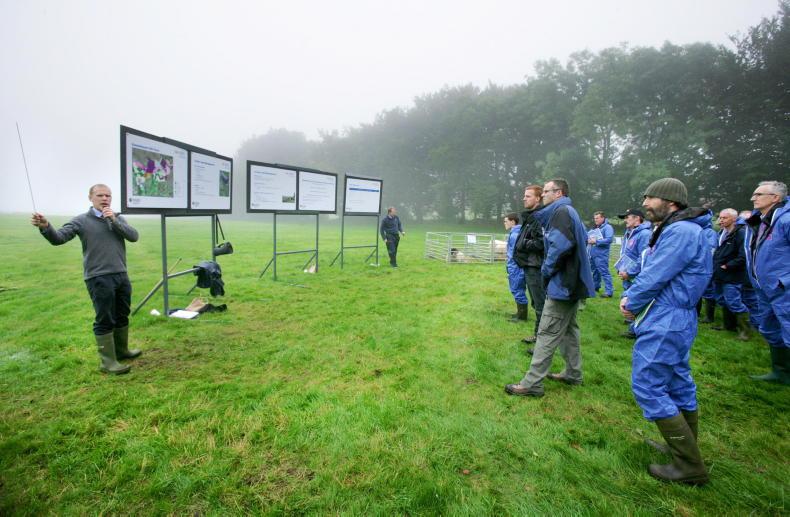Over 150 farmers turned up to the first of our suckler mart demonstrations with Progressive Genetics in Elphin, Co Roscommon on Tuesday night.There potentially will be another 150 in Milford mart in Co Donegal tonight (Thursday). There is a pep back in the step of some suckler farmers as average prices achieved for suckler bred weanlings hit a new high.
Over 150 farmers turned up to the first of our suckler mart demonstrations with Progressive Genetics in Elphin, Co Roscommon on Tuesday night.
There potentially will be another 150 in Milford mart in Co Donegal tonight (Thursday). There is a pep back in the step of some suckler farmers as average prices achieved for suckler bred weanlings hit a new high.
The market is fuelled by a prime beef price closer to €6/kg. Elphin Mart manager Ciaran Lynch showed me the bank holiday Monday prices for good quality fleshed suckler cows that were making an average of €2.60/kg in the ring.
At €2.60/kg, it means the average 750kg suckler cow is coming into €1,950. That money flows out into the replacement heifer and weanling ring.
Cow price is one thing, but weanling price is an even better gauge of where the suckler game is. More and more suckler farmers are now classified as calf to weanling producers.
The small finisher can’t get a forward contract price for fat cattle from meat factories so they are selling young cattle in the mart.
It’s why we see 25% to 30% of the kill coming from bigger, feedlot type operators. The bigger operators probably have been given a forward floor price for beef in three months’ time.
Knowing that gives them purchasing power around the ring, so they shoulder less risk.
MartBids
Every week we detail prices for weanlings from our comprehensive MartBids database, which now has over 30,000 animals per week included in the analysis, and we can clearly see that the top third of weanlings are making in excess of €3.80/kg in the mart ring.
At 350kg average liveweight, you are at €1,330 per animal. If we tightened that to the top 20%, the average rises to over €4/kg.
Combine a portion of the suckler cow price, let’s say 20% if you sell a cow every five years, so €400. Add that to the weanling price at €1,330 and you are into over €1,700 in market sales per cow per year, assuming a calf per cow per year.
The suckler game as we know is underpinned by support schemes. On paper, for small herds the specific suckler cow support is the €150/cow plus the 2025 €75 national beef welfare payment.
If ACRES is an option, it can bring something small to the table on some farms. On top of this, put your BISS/eco scheme and maybe organics and you can see a path to a nice ‘premium’ top up for a lowly stocked suckler operation.
The suckler game is largely part-time farming so off farm income, while it is available, makes the whole system work. This is especially true for lower stocked farms where the maximum premiums are paid per hectare.
This week, Teagasc published its annual sector ‘Sustainability’ measure for 2023. One leg of the stool detailed is ‘economic’ sustainability. Remember this exercise is almost a year out of date compared to the figures we have discussed here from the sales rings this week.
However, for 2023, it is also showing a lift in gross margin per hectare from cattle farms.
Consistent
Gross output remained pretty consistent from 2022 to 2023 at €1,767/ha, however, gross margin per hectare jumped from €769/ha in 2022 to €1,011/ha in 2023. This excludes support payments.
With higher prices you would expect this to rise even further when the 2024 numbers are crunched.
Adam Woods has a survey report on meal costs showing that the average weanling ration is back €30 to €40 per tonne on this time last year. That’s another positive for suckler weanling operators.
After years of lower prices and subsequent suckler cow number reductions, is the tide turning on suckler viability?
Is the combination of lower cow numbers in Ireland, the UK and Europe beginning to return market prices that are more reflective of the product value? Farmers will wait for more, and further price rises to match neighbouring markets.
However, the current market prices indicate someone thinks meat will be scarce and worth more in a few months’ time.










SHARING OPTIONS